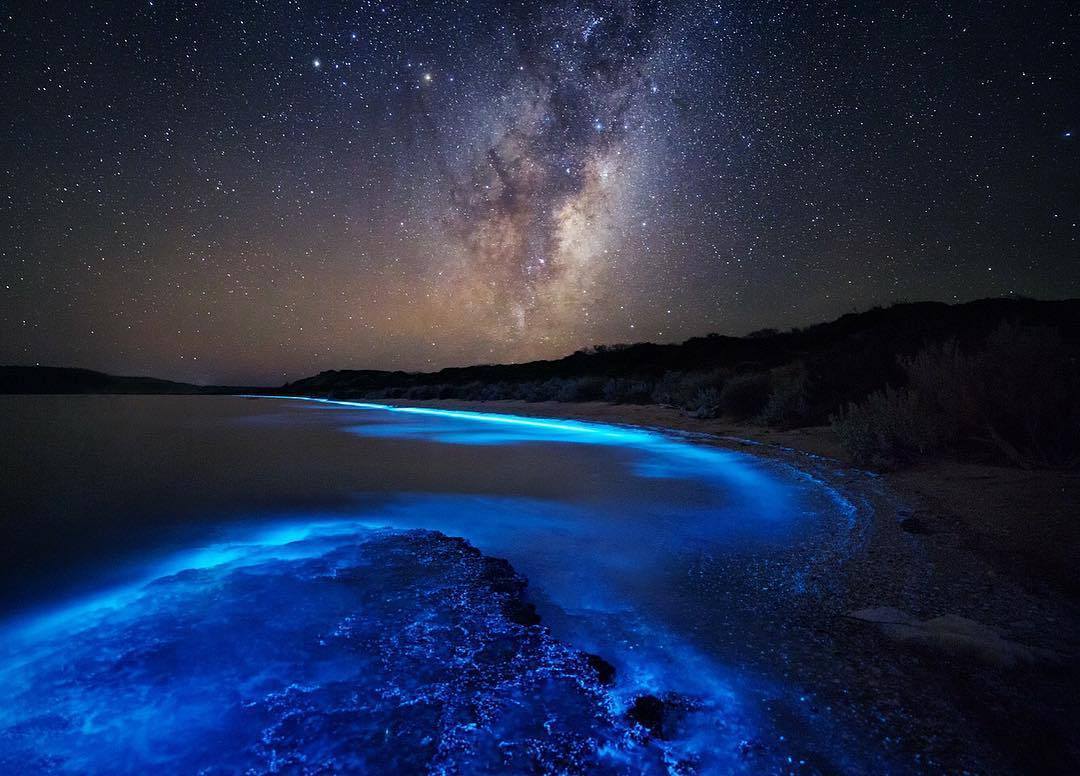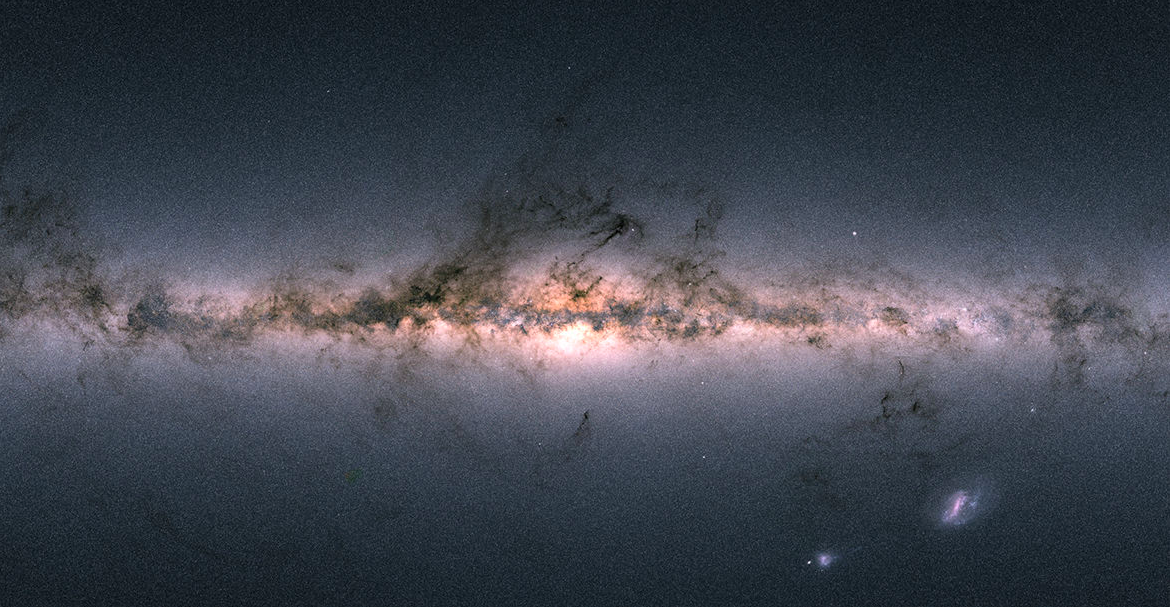
[Taken from 'Discover Tasmania' @ FB, 2017.03.15]
[A wide-field (~135◦) optical view towards the Galactic center]

[A whole-sky optical view of the Milky Way, released by the GAIA mission in 2018.]
Counting stars: Herschel (~1800); Kapteyn (~1900);
-- The 'grindstone' model, a disk about 15 kpc in diameter, the Sun at the center
What's wrong with the grindstone model?
Interstellar extinction and limitation of instruments
-- the grindstone model actually counted only nearby stars.
Harlow Shapley, in 1920, measured the spatial distribution of globular clusters
(using RR Lyrae stars), and found that the distribution is roughly spherically sysmetric.
-- The galactic center is in the direction of Sagittarius;
the Sun is about 8 kpc away from the center!
Besides stars, there is much dust in the galaxy. Dust is at bout 10 K - 100 K and radiates in 30 - 300 microns (far infrared).
Stars are brighter than dust in near infrared (< 10 microns). Because extinction in this band is not severe, one can see stars through the dust.
Stars are concentrated near the nucleus of the Milky Way and also distributed in the disk. Dust is mainly in the disk.
[Upper panel: IRAS composite image at 25, 60, and 100 μm. Lower panel: COBE composite image at 1.2, 2.2, and 3.4 μm.]
Disk: dust; young, metal-rich, population I stars
Halo: old, metal-poor, population II stars; 1% of these stars are in globular clusters
Central bulge: containing both population I and population II stars
[Disk and halo stars rotate around the galactic center in different ways.]
[NGC 4565, a galaxy showing the morphology described above for our Milky Way galaxy.]
(Where (or, What) is the boundary of our Galaxy? Check Watkins et al. 2019, ApJ 873, 118 for a 80-kpc diameter and Deason et al. 2020, arXiv:2002.09497 for a 580-kpc diameter (!!!).)